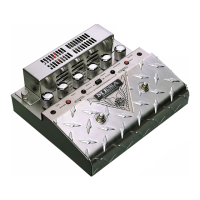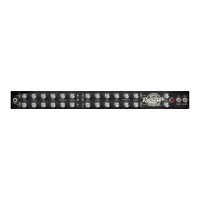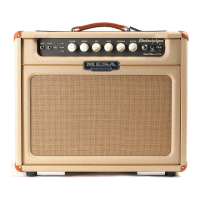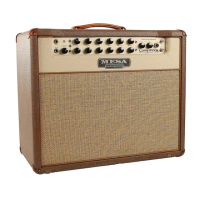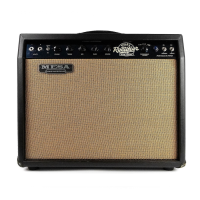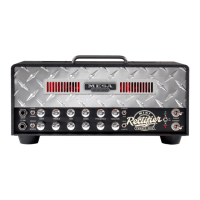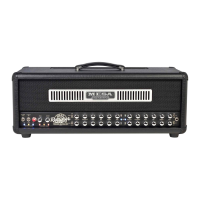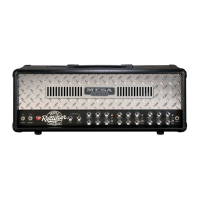This control along with RHYTHM 2’s PRESENCE control should be worked with together to produce the desired gain and brightness
of the mode. Setting the TREBLE higher, as always, increases the gain of the mode and allows increased distortion and sustain.
Lower settings allow the MID and BASS controls to become more dominant adding warmth to the
sound.
RHYTHM 2’s PRESENCE control also works on higher frequencies than the TREBLE, so by working with both controls, you can
produce any sound from fat and thick to searing and shredding. Don’t be surprised if loud group playing requires higher PRESENCE
control settings to cut through...this is why we’ve provided the three modes with their separate Presence
controls.
The RHYTHM 2 (and LEAD) PRESENCE control also has a PULL SHIFT feature. This Shift normalizes
the amount of high frequencies produced in the power section. With the PULL SHIFTS engaged, the
Presence controls will be more effective and will act on a higher frequency range. When the SHIFTS are pushed in, a punchier, more
aggressive tone is produced and the PRESENCE controls effectiveness is reduced.
This MASTER control is used to balance playing loudness in RHYTHM 2 and also determines the amount of RHYTHM 2 signal at the
Effects Send jack.
This control sets up the input sensitivity for the LEAD mode. The more signal strength dialed in here, early in the preamp, the more
distortion will be available at the LEAD DRIVE control. Yet it is not necessary or recommended to turn the LEAD GAIN fully up.
Best results will occur with settings in the
8
range. As you approach a Gain of
7
the Lead sound will
become extremely focused, rich and smooth; above
8
, total saturation occurs, reducing the effectiveness
of the tone controls and causing increased “microphonics” and noise in the preamp tubes. You’ll notice
subtle shifts in distortion tonality by trying different mixes of LEAD GAIN and LEAD DRIVE. The LEAD
GAIN control incorporates a PULL FAT for thickening the sound and saturating the signal further. This pull
shift lowers the frequency of the Treble, adding a boost in the lower midrange. Try this shift for beefing up
the sound of weaker, stock pick-ups or simply for adding focus at virtually any setting of the GAIN control.
CONTROLS:
(Continued)
RHYTHM 2 TREBLE:
R2 TREBLE
R1 +R2 BASS
R1 +R2 MID
6
2
3
4
5
7
8
9
1
0
10
6
2
3
4
5
7
8
9
1
0
10
6
2
3
4
5
7
8
9
1
0
10
R2 PRESENCE:
R2 MASTER:
PAGE 5
SETTING THE LEAD MODE:
LEAD GAIN:
PULL SHIFT
TREBLE
PRESENCE
CONTROLS
R 1
6
2
3
4
5
7
8
9
1
0
10
6
2
3
4
5
7
8
9
1
0
10
6
2
3
4
5
1
0
R 2
2
3
9
1
0
10
PULL BRIGHT
MASTERS
LEAD DRIVE
R2 TREBLE
PULL
R 2
R 1
5
2
3
4
6
7
8
9
1
0
10
6
2
3
4
5
7
8
9
1
0
10
6
2
3
4
5
7
8
9
1
0
10
PRES
CONT
2
3
9
1
0
10
2
3
9
1
0
10
INPUT
PULL BRIGHT
INSTRUMENT
RHY2 GAIN
RHY1 GAIN
PULL FAT
PULL FAT
LEAD GAIN
5
2
3
4
6
7
8
9
1
0
10
6
2
3
4
5
7
8
9
1
0
10
6
2
3
4
5
7
8
9
1
0
10
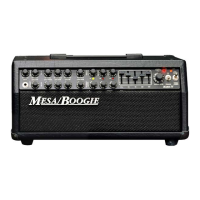
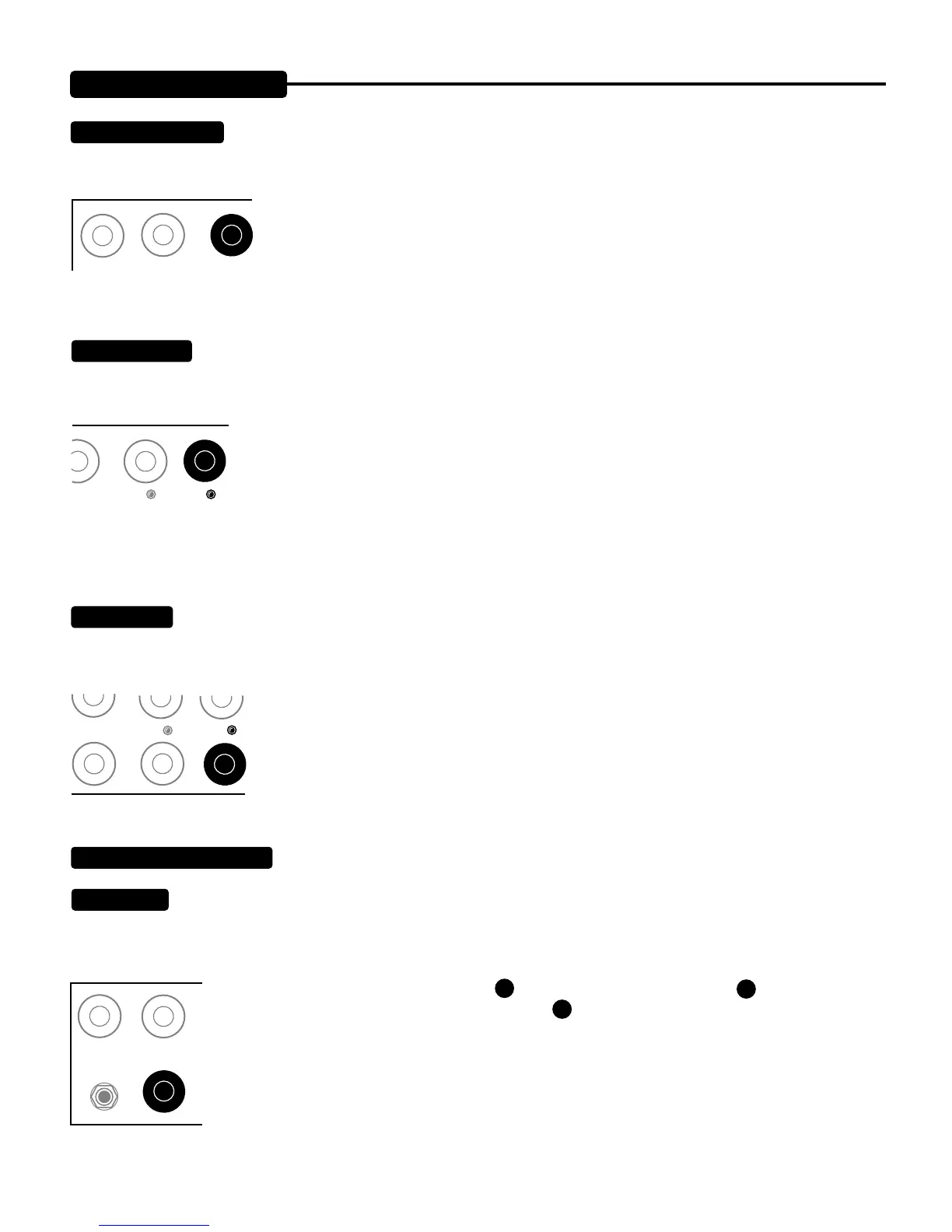